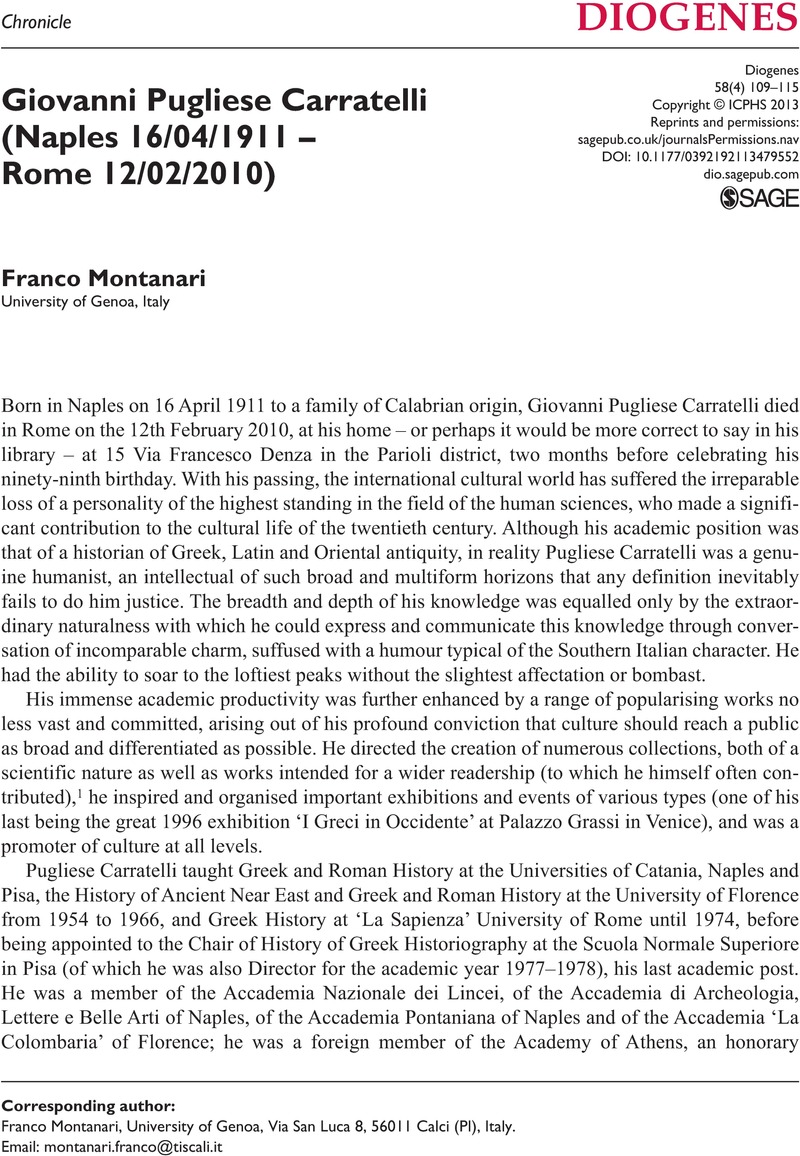No CrossRef data available.
Article contents
Giovanni Pugliese Carratelli (Naples 16/04/1911 – Rome 12/02/2010)
Published online by Cambridge University Press: 01 January 2024
Abstract
An abstract is not available for this content so a preview has been provided. Please use the Get access link above for information on how to access this content.

- Type
- Chronicles
- Information
- Copyright
- Copyright © ICPHS 2013
References
Comparetti, D (1989) Il Kalevala o la poesia tradizionale dei Finni. Studio storico-critico delle grandi epopee nazionali [1891], with a foreword by G. Pugliese Carratelli. Milan: Guerini.Google Scholar
De Marzi, G (1983) L’opera di Adolfo Omodeo nella storiografia italiana. Guida bibliografica degli scritti su Adolfo Omodeo 1914–1983. Cassino: Sangermano Editoriale.Google Scholar
Ferri, S, Gigante, M, Mazza, M, Mazzarino, S, Musti, D (1976) ‘Premessa’, in Pugliese Carratelli (1976: i–ix).Google Scholar
Imparati, F, ed. (1988) Eothen. Studi di storia e di filologia anatolica dedicati a Giovanni Pugliese Carratelli. Florence: Elite.Google Scholar
Levi, D (1988) ‘Giovanni Pugliese Carratelli: lo studioso e l’uomo’, in Imparati (1988: 9–16).Google Scholar
Pugliese Carratelli, G (1932) ‘Gelone principe siracusano’, asso, s. ii, 8: 3–25, 421–446.Google Scholar
Pugliese Carratelli, G (1946b) Porfirio, Vita di Plotino ed ordine dei suoi scritti, testo critico a cura di G. Pugliese Carratelli, con note, testimonianze e l’inedita versione latina di G. Leopardi, trad. di V. Cilento. Naples: Macchiaroli.Google Scholar
Pugliese Carratelli, G (1976) Scritti sul mondo antico: Europa e Asia. Espansione coloniale, ideologie e istituzioni politiche e religiose. Naples: Macchiaroli.Google Scholar
Pugliese Carratelli, G (1990) Tra Cadmo e Orfeo. Contributi alla storia civile e religiosa dei Greci d’Occidente. Bologna: Il Mulino.Google Scholar
Pugliese Carratelli, G (2012) Le lamine d’oro orfiche. Istruzioni per il viaggio oltremondano degli iniziati greci. Milan: Adelphi.Google Scholar


